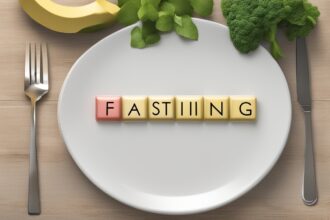Intermittent fasting (IF) has gained immense popularity as a powerful tool for weight loss and overall health improvement. Unlike traditional diets that focus on what you eat, intermittent fasting emphasizes when you eat. This approach, often referred to as sustainable slimming through intermittent fasting, offers a flexible and effective way to shed pounds without the constant feeling of deprivation. In this comprehensive guide, we’ll explore how intermittent fasting works, its benefits for weight loss, and practical tips to make it a sustainable part of your lifestyle.
What Is Intermittent Fasting and How Does It Work?
Intermittent fasting is not a diet in the conventional sense but rather an eating pattern that alternates between periods of fasting and eating. Popular methods include the 16/8 method (fasting for 16 hours and eating during an 8-hour window), the 5:2 diet (eating normally for five days and restricting calories on two non-consecutive days), and the Eat-Stop-Eat approach (fasting for 24 hours once or twice a week). The core idea is to give your body extended periods without food, which can trigger various metabolic benefits.
During fasting, your body shifts from using glucose as its primary energy source to burning stored fat, a process known as ketosis. This metabolic switch is one of the reasons why sustainable slimming through intermittent fasting is so effective. Additionally, fasting periods reduce insulin levels, allowing fat cells to release stored energy, further aiding weight loss.
Why Intermittent Fasting Promotes Sustainable Weight Loss
One of the biggest challenges with traditional dieting is maintaining weight loss over the long term. Many diets are restrictive, leading to cravings, binge eating, and eventual weight regain. Sustainable slimming through intermittent fasting addresses this by focusing on timing rather than food elimination. You can still enjoy your favorite foods within your eating window, making it easier to stick to the plan.
Moreover, intermittent fasting helps regulate hunger hormones like ghrelin and leptin, which control appetite. Studies have shown that fasting can reduce ghrelin levels (the hunger hormone) while increasing feelings of fullness, making it easier to consume fewer calories naturally. Over time, this creates a calorie deficit, which is essential for weight loss, without the need for constant willpower.
For more insights on managing hunger during weight loss, check out our post on Hunger Management Tips for Effective Dieting.
Health Benefits Beyond Weight Loss
While sustainable slimming through intermittent fasting is a primary goal for many, the benefits extend far beyond the scale. Fasting has been linked to improved insulin sensitivity, which can lower the risk of type 2 diabetes. It also promotes autophagy, a cellular repair process that removes damaged cells and supports overall health.
Additionally, intermittent fasting may enhance brain health by boosting the production of brain-derived neurotrophic factor (BDNF), a protein associated with cognitive function and mood regulation. Some studies suggest it could even reduce inflammation and improve heart health by lowering blood pressure and cholesterol levels. These added benefits make intermittent fasting a holistic approach to wellness, not just a weight loss tool.
Curious about other health-boosting strategies? Read our guide on Nutrition Tips for Overall Wellness.
How to Start Intermittent Fasting for Sustainable Slimming
Getting started with intermittent fasting is simpler than you might think, but it’s important to approach it gradually to avoid overwhelm. Begin with a beginner-friendly method like the 16/8 protocol. For example, skip breakfast and start eating at noon, then stop by 8 p.m. This gives you a 16-hour fasting window and an 8-hour eating window.
During your eating window, focus on nutrient-dense foods such as lean proteins, vegetables, whole grains, and healthy fats to support your body’s needs. Avoid overeating or indulging in processed foods, as this can negate the benefits of fasting. Hydration is also key—drink plenty of water, herbal tea, or black coffee during fasting periods to stay energized and curb hunger.
If you’re new to fasting, you might experience initial discomfort like hunger pangs or fatigue. These symptoms often subside as your body adjusts. For additional support, explore our article on A Beginner’s Guide to Fasting for Weight Loss.
Common Challenges and How to Overcome Them
While sustainable slimming through intermittent fasting is effective, it’s not without challenges. One common issue is social eating. Meals with friends or family often fall outside fasting windows, leading to temptation. To manage this, plan your eating window around social events when possible, or politely explain your fasting schedule to loved ones for support.
Another hurdle is dealing with hunger during fasting periods. To combat this, stay busy with activities, drink water or zero-calorie beverages, and remind yourself that hunger often passes in waves. If fasting feels too difficult, consider shortening your fasting window or consulting a healthcare professional to ensure it’s right for you.
For more strategies on overcoming diet challenges, check out our post on Overcoming Common Dieting Obstacles.
Tips for Long-Term Success with Intermittent Fasting
To make sustainable slimming through intermittent fasting a permanent part of your life, consistency and flexibility are key. Don’t aim for perfection—allow yourself occasional breaks during holidays or special occasions without guilt. The beauty of intermittent fasting is that it can adapt to your lifestyle, not the other way around.
Track your progress by monitoring not just your weight, but also how you feel. Improved energy, better sleep, and reduced cravings are all signs that fasting is working for you. Additionally, pair fasting with regular physical activity to maximize fat loss and muscle retention. Even light exercise like walking or yoga can make a big difference.
Lastly, listen to your body. If you feel overly fatigued or notice negative changes in your health, adjust your fasting schedule or seek advice from a nutritionist. For workout ideas to complement your fasting routine, see our guide on Low-Impact Exercises for Weight Loss.
Disclaimer: The information provided in this article is for educational purposes only and should not be considered medical advice. Intermittent fasting may not be suitable for everyone, including pregnant or breastfeeding women, individuals with certain medical conditions, or those with a history of eating disorders. Always consult a healthcare professional or registered dietitian before starting any new diet or fasting regimen to ensure it is safe and appropriate for your individual needs.
References
- Harvard Health Publishing – Intermittent Fasting: Surprising Update
- Mayo Clinic – Intermittent Fasting: What Is It, and How Does It Work?
- National Center for Biotechnology Information – Effects of Intermittent Fasting on Health, Aging, and Disease
- Johns Hopkins Medicine – Intermittent Fasting: What Is It, and How Does It Work?
- WebMD – Intermittent Fasting: What You Need to Know
This content is for informational purposes only and not a substitute for professional advice.






